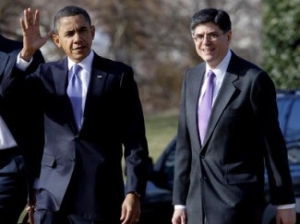Bill Moyers & Michael Winship (Common Dreams) | RS_News | January 31 2012
OPINION | A week or so ago, we read in The New York Times about what in the Gilded Age of the Roman Empire was known as a bacchanal – a big blowout at which the imperial swells got together and whooped it up. [The St. Regis Hotel in Manhattan was the site of a black-tie dinner for Kappa Beta Phi, whose members were told “what happens at the St. Regis stays at the St. Regis.” (John Marshall Mantel for The New York Times))] The St. Regis Hotel in Manhattan was the site of a black-tie dinner for Kappa Beta Phi, whose members were told “what happens at the St. Regis stays at the St. Regis.”
This one occurred here in Manhattan at the annual black-tie dinner and induction ceremony for Kappa Beta Phi. That’s the very exclusive Wall Street fraternity of billionaire bankers, and private equity and hedge fund predators. People like Wilbur Ross, the vulture capitalist; Robert Benmosche, the CEO of AIG, the insurance giant that received tens of billions in bailout money; and Alan “Ace” Greenberg, former chairman of Bear Stearns, the failed investment bank bought by JPMorgan Chase.
They got together at the St. Regis Hotel off Fifth Avenue to eat rack of lamb, drink and haze their newest members, who are made to dress in drag, sing and perform skits while braving the insults, wine-soaked napkins and petit fours – those fancy little frosted cakes – hurled at them by the old guard. In other words, a gilt-edged Animal House, food fight and all.
This year, the butt of many a joke were the protesters of Occupy Wall Street. In one of the sketches, the bond specialist James Lebenthal scolded a demonstrator with a face tattoo, “Go home, wash that off your face and get back to work.” And in another, a member – dressed like a protester – was told, “You’re pathetic, you liberal. You need a bath!”
Pretty hilarious stuff. The whole affair’s reminiscent of the wingdings the robber barons used to throw during America’s own Gilded Age a century and a half ago, when great wealth amassed at the top, far from the squalor and misery of working stiffs. Guests would arrive in the glittering mansions for costume balls that rivaled Versailles, reinforcing the sense of superiority and the virtue of a ruling class that depended on the toil and sweat of working people.


 The Massachusetts attorney general has filed a lawsuit against five large U.S. banks accusing them of deceptive foreclosure practices, a signal of ebbing confidence that a multi-state agreement can be worked out.
The Massachusetts attorney general has filed a lawsuit against five large U.S. banks accusing them of deceptive foreclosure practices, a signal of ebbing confidence that a multi-state agreement can be worked out.